Recognizing Dog Overheating Symptoms: Vital Signs and Solutions
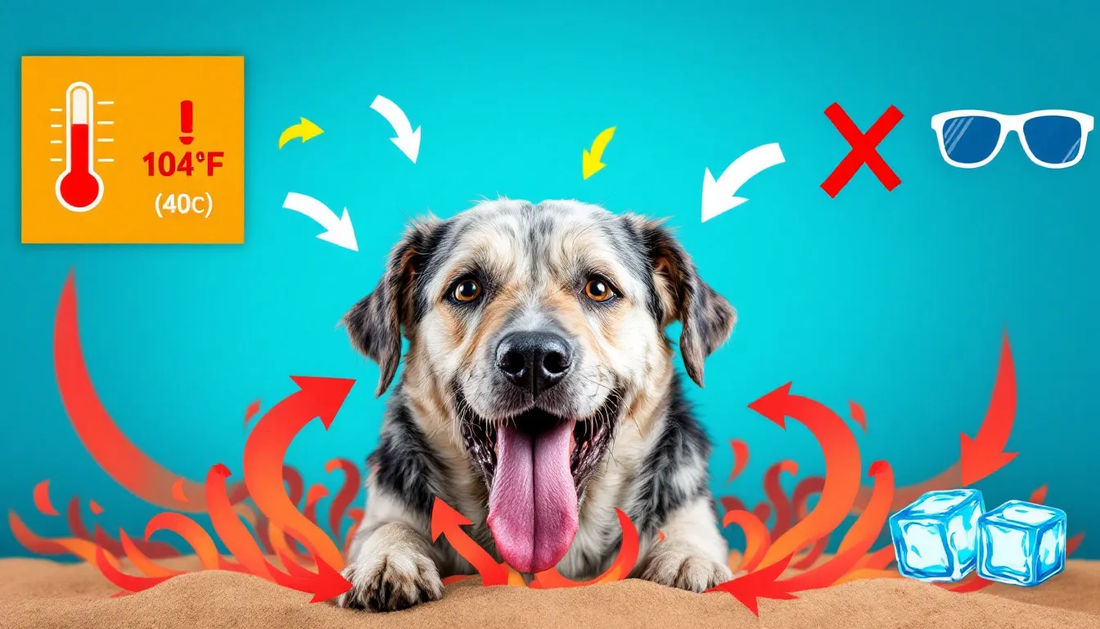
Recognizing Dog Overheating Symptoms: Vital Signs and Solutions
Is your dog panting heavily or acting unusually tired? These could be dog overheating symptoms. This article explains critical signs of overheating, such as excessive panting, drooling, and changes in gum color. We also cover what to do immediately to cool your dog down. Read on to keep your dog safe in the heat.
Key Takeaways
- Dogs cool primarily through panting and have limited sweat glands, making them susceptible to overheating in high temperatures and humidity.
- Key symptoms of overheating include excessive panting, drooling, changes in gum color, and elevated body temperature, necessitating immediate cooling actions.
-
Specific dog breeds, such as brachycephalic dogs, seniors, and overweight dogs, are at higher risk of overheating and require additional preventive measures and monitoring.
Why Dogs Overheat
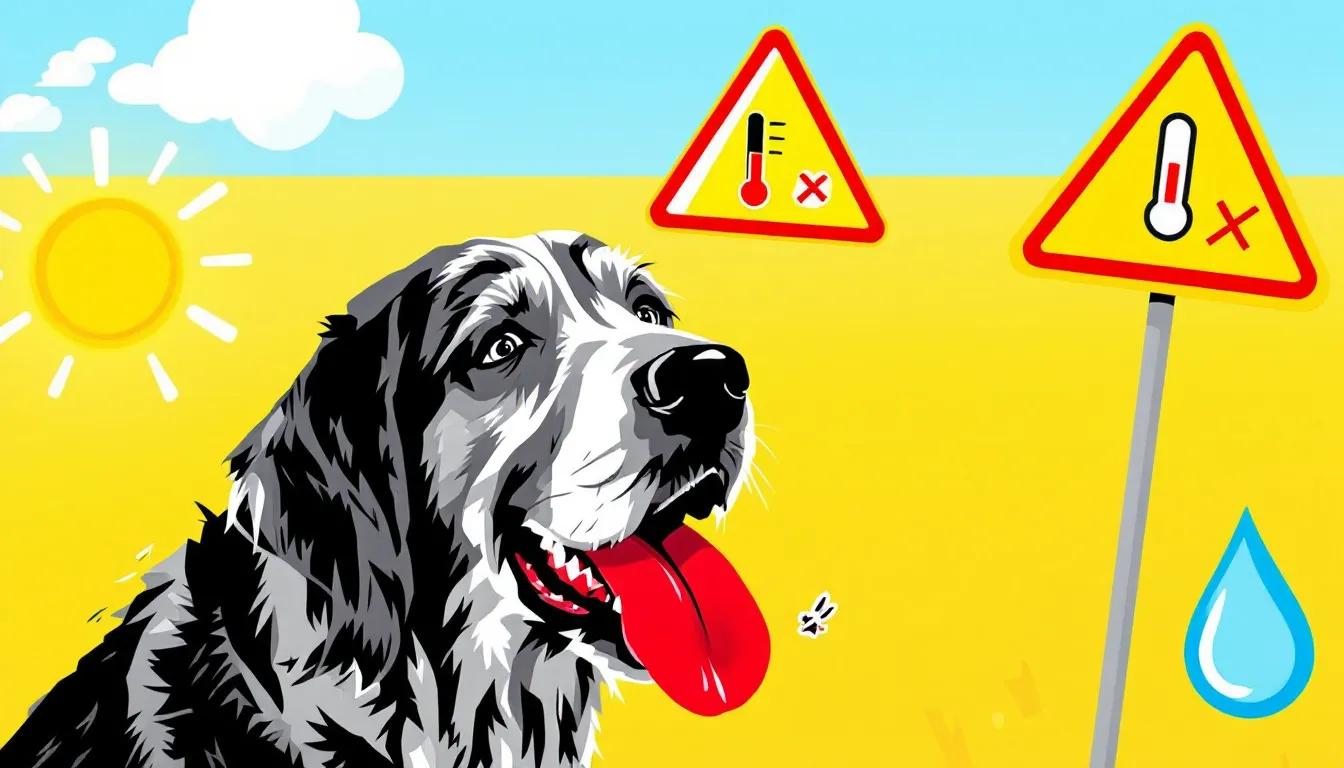
Dogs don’t sweat like humans. They have a limited number of sweat glands located primarily in their paw pads and noses, making panting their primary cooling mechanism. When a dog pants, it can reach a rate of 40 to 400 breaths per minute, enabling them to release heat through moisture in their breath. However, this method is less effective in high temperatures or humid conditions, making it difficult for dogs to cool down efficiently.
Environmental factors such as high humidity, dark-colored fur absorbing more sunlight, and warm temperatures can all contribute to overheating. Even moderate weather conditions combined with intense physical activity or excitement can lead to a dangerous rise in a dog’s body temperature.
Therefore, closely observing your dog’s behavior and environment, especially in hot summer months, is crucial.
Key Symptoms of Dog Overheating
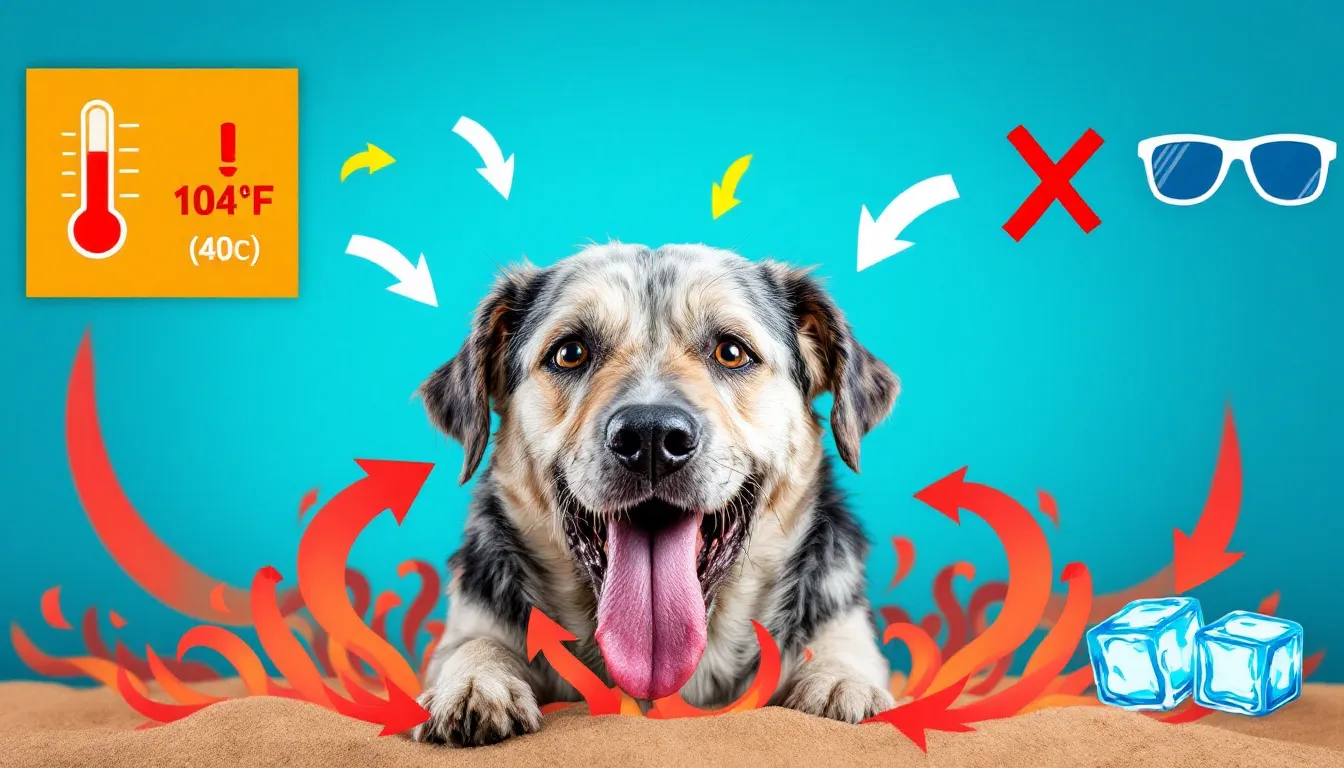
Early detection of overheating symptoms can prevent heat stress and more severe issues. Primary signs include excessive panting and drooling, the dog’s natural mechanisms to release excess body heat. Keeping an eye on these indicators allows for swift action to cool your dog down before their condition escalates.
Other common symptoms to watch for include unusual tiredness, changes in behavior, and visible physical changes such as a rise in body temperature or changes in gum color. Recognizing these signs is the first step in protecting your dog’s health during hot weather.
Excessive Panting and Drooling
Panting is the primary way dogs cool themselves, but excessive, heavy panting that persists is a red flag. When a dog is panting heavily and constantly, it indicates that their body is struggling to regulate its temperature. This is often accompanied by increased thirst as the dog loses moisture through both panting and sweating from their limited sweat glands.
Excessive panting and drooling indicate overheating and require immediate cooling. Offer cool water and move the dog to a shaded or cooler area to alleviate these symptoms and prevent further heat stress.
Changes in Gum Color and Tongue
A dog’s gums can tell you a lot about their health. Healthy gums typically have a nice pink color. This is considered normal. However, when a dog is overheating, their gums and tongue may turn bright or dark red due to the increased blood flow to these areas as the body attempts to cool itself down.
Checking your dog’s gums regularly during hot weather can help catch early signs of overheating and allow for timely intervention before it becomes severe.
Elevated Body Temperature
A noticeable increase in your dog’s body temperature rises is a critical indicator of overheating. A dog’s normal body temperature ranges between 101°F and 102.5°F. A rise above 104°F indicates a serious problem that needs immediate intervention to prevent heat stroke.
During hot days, monitor your dog’s temperature, especially after vigorous activity or in warm environments. Use a rectal thermometer to get an accurate reading if you suspect overheating.
Take immediate steps to cool your dog if their temperature exceeds the normal range to prevent severe and potentially fatal conditions.
Advanced Symptoms of Heat Stress
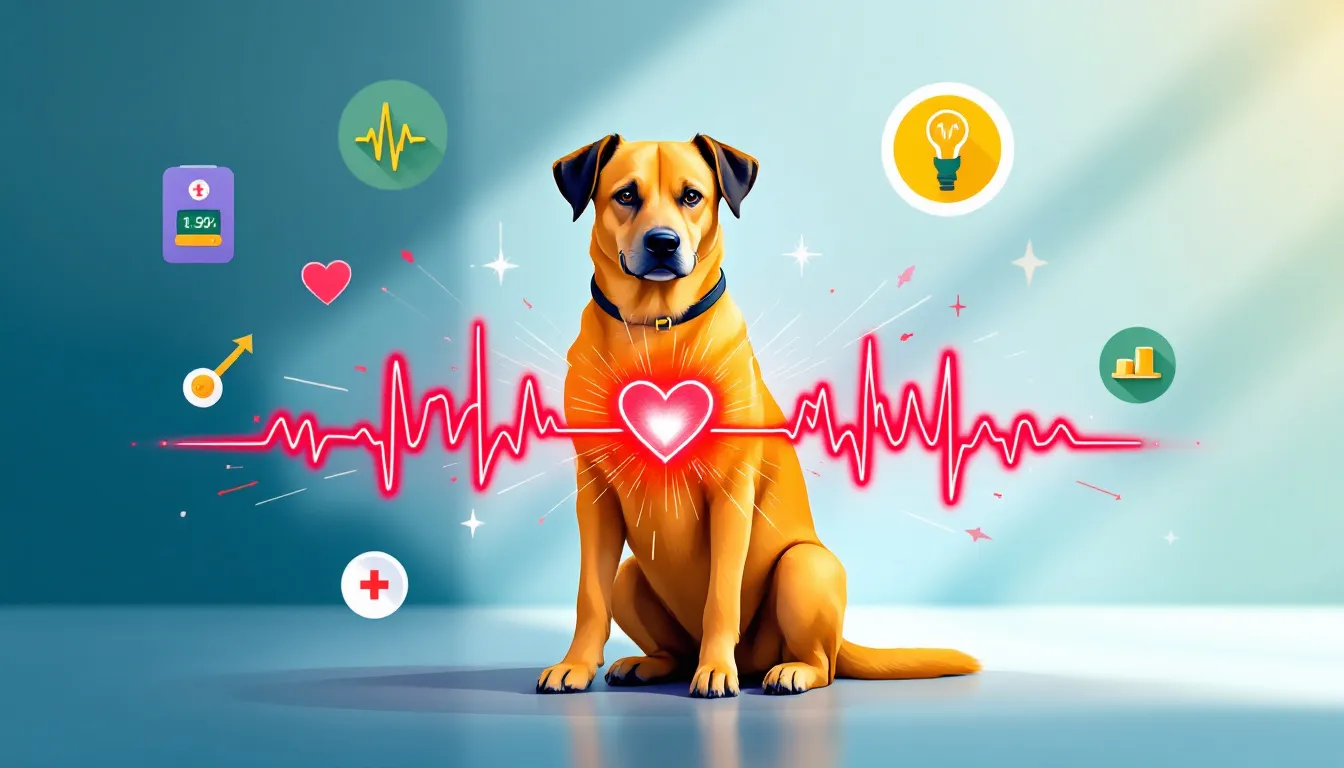
If initial symptoms of overheating are not addressed, dogs can develop advanced symptoms that indicate severe heat stress. These symptoms include disorientation, rapid heartbeat, vomiting, and collapse, all of which require urgent veterinary attention. Early recognition of these severe symptoms can prevent life-threatening situations.
A dog’s temperature exceeding 105°F indicates a dangerous condition known as heat stroke, requiring immediate cooling and veterinary care to save the dog’s life.
Monitor your dog for subtle signs of respiratory distress, like labored breathing, which can indicate worsening heat stress.
Disorientation and Stumbling
A dog exhibiting disorientation or stumbling is showing signs of impaired coordination due to severe overheating. This can manifest as difficulty walking, confusion, or appearing dazed.
These symptoms require immediate action to cool down the dog and seek veterinary care.
Vomiting and Diarrhea
Heat can severely upset a dog’s stomach, leading to gastrointestinal distress such as vomiting and diarrhea. These symptoms not only indicate severe overheating but also contribute to dehydration, exacerbating the dog’s condition. It’s crucial to monitor the dog’s condition closely if they start vomiting due to heat stress.
If a dog vomits due to overheating, cool them down and ensure they remain hydrated by offering small amounts of cool water and moving them to a shaded area. Continuous monitoring and veterinary advice can prevent worsening of the situation.
Rapid Heartbeat and Weakness
A rapid heartbeat in a dog can be a response to extreme body heat, indicating severe overheating. Along with weakness, these symptoms are serious and necessitate urgent cooling and veterinary attention.
Recognizing these signs early can prevent critical health complications.
Immediate Actions for Overheated Dogs
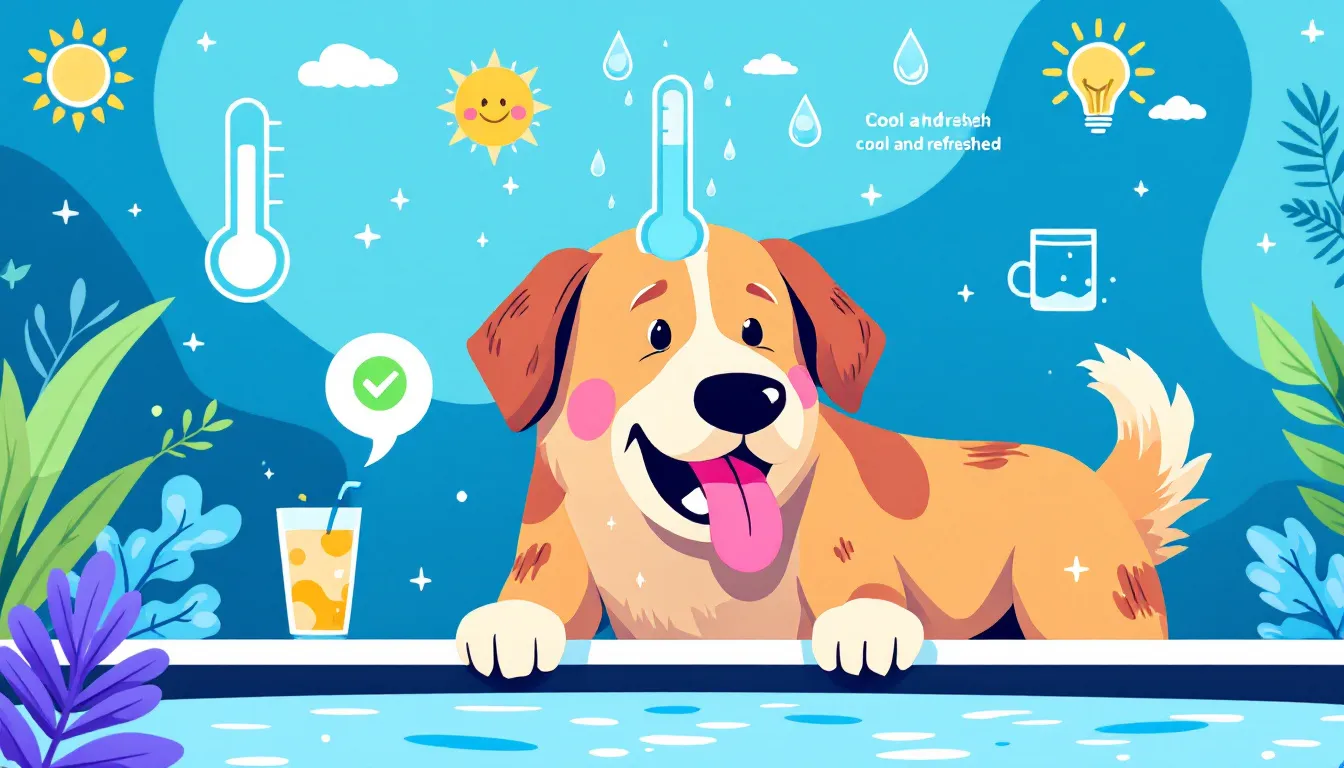
Immediate action is crucial when you notice your dog overheating. Here are the steps to take:
- Move the dog indoors or to a shaded area.
- While shade and water help, air conditioning or fans can significantly aid in cooling.
-
Offer cool water, but avoid ice-cold water to prevent shock.
Additionally, applying an ice pack wrapped in a thin towel to the dog’s armpits, neck, or groin can provide effective cooling. However, check the dog’s skin for redness or irritation and do not apply the ice pack for longer than 15 to 20 minutes.
Monitor the dog closely for any concerning signs of heat stress and calm them down from continued activity to manage overheating effectively.
Move to a Cool Environment
Disorientation due to overheating requires immediate cooling. Move the dog to an air-conditioned room or shaded area. If air conditioning is unavailable, use fans to lower the dog’s temperature.
Continuously monitor your dog while it cools down to ensure its condition improves. Keeping a close eye on your dog’s behavior and temperature during this period is crucial to prevent further complications.
Provide Cool Water
Regular cold tap water is essential for rehydration during overheating. Ensure the water is not ice-cold to avoid shock. Cool water helps reduce the dog’s internal temperature and prevents dehydration.
Use Cooling Methods
Cooling mats, hardwood, or tile floors provide effective surfaces for cooling down. Wrap an ice pack in a thin towel to prevent direct skin contact. Senior dogs with arthritis may prefer cooling mats over hard surfaces.
Safe cooling methods are crucial to prevent overheating, especially during hot weather. Continuously monitor the dog’s condition and ensure they are cooling down effectively.
Preventing Overheating in Dogs
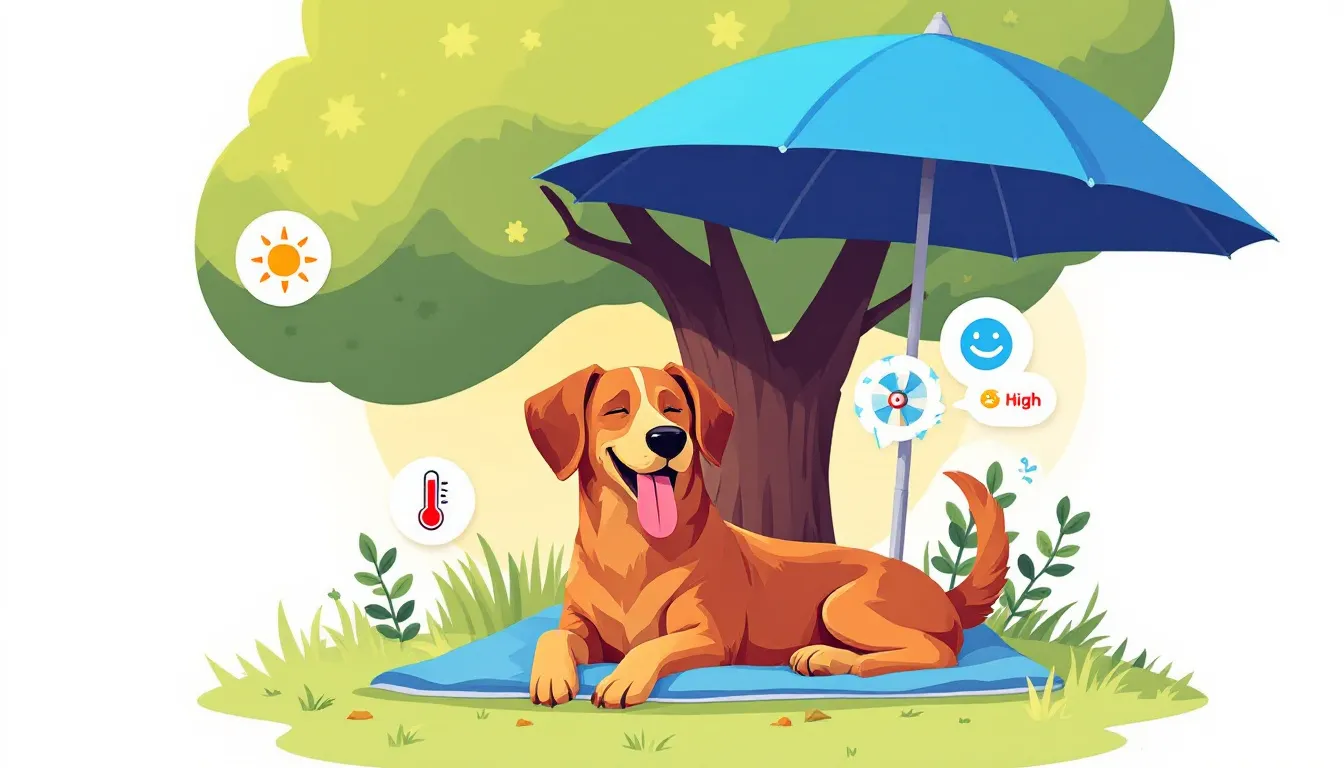
Preventing overheating in dogs involves several proactive strategies. Adequate water is vital to prevent heat exhaustion and heat stroke, even if the dog has unlimited access. Shaded areas provide a cooler environment for effective temperature regulation.
Never leave dogs alone in a parked car, as this significantly increases the risk of overheating. Close monitoring and preventive measures during warm weather can keep them safe and cool.
Hydration Strategies
Rehydration is vital to prevent heat exhaustion or heat stroke. Dogs should always have access to fresh water to stay hydrated and prevent overheating. Gastrointestinal issues in overheated dogs can be exacerbated by stress and dehydration.
LYX Hydralicious Mix provides essential hydration for dogs of all ages, helping to combat dehydration with every sip. Flavored hydration can encourage dogs to drink more, keeping them well-hydrated and happy. The flagship product, LYX Hydralicious Mix, is a blend of coconut water and savory chicken or beef broth, which dogs naturally find appealing.
Make sure your dog’s water bowl stays filled, especially on hot days.
Timing Exercise
Exercise your dog during cooler parts of the day to prevent overheating. Early morning or late night are ideal times.
Limiting outdoor activities during peak heat hours ensures your dog’s safety and prevents heat stress.
Providing Shade and Cool Spots
Always provide shaded areas to help prevent overheating. Shaded areas allow dogs to regulate their body temperature more effectively, especially important for overweight dogs who are more susceptible to heat-related issues.
Using cooling mats and ensuring cool spots for resting can help manage your dog’s temperature. On humid days and during outdoor adventures, always provide a cool place for your dog to retreat to, preventing overheating and ensuring safe outdoor enjoyment.
Special Considerations for At-Risk Dogs
Certain dogs are more prone to overheating and require extra care. Brachycephalic breeds, such as the Boston Terrier, have anatomical structures that make breathing more challenging, especially in warm conditions. Senior dogs and puppies also have unique vulnerabilities due to their less efficient temperature regulation mechanisms. Overweight dogs face increased risks of overheating due to their reduced ability to cool down.
Understanding these considerations helps you take better care of your at-risk dog during hot weather.
Brachycephalic Dogs
Flat-faced breeds, known as brachycephalic dogs, are particularly vulnerable to heat stress due to their anatomical structure affecting breathing. Even in cooler weather, these dogs can experience overheating from moderate activity.
Close monitoring and providing ample cooling opportunities are essential.
Senior Dogs and Puppies
Older dogs may have diminished abilities to regulate their body temperature due to health issues. Puppies, with their immature systems, can struggle more with temperature management and hydration. Both senior dogs and puppies are at an increased risk of overheating due to their less efficient temperature regulation mechanisms.
Pet owners should take extra precautions with these vulnerable dogs, including ensuring access to dog cool environments, fresh water, and avoiding strenuous activities during hot weather to prevent dogs overheating. As a responsible pet owner, it’s crucial to prioritize their well-being.
Overweight Dogs
Extra weight acts as insulation, decreasing the dog’s cooling efficiency and temperature regulation. Overweight dogs face increased risks of overheating due to their reduced ability to cool down.
Diet management and controlled exercise are vital for preventing overheating in overweight dogs.
When to Seek Veterinary Care
Severe symptoms of overheating, such as collapse, seizures, and abnormal gum color, indicate a critical situation that requires immediate veterinary care. Additional severe indicators include mentation changes and gasping for air. It’s crucial to take a dog suspected of heatstroke to an emergency vet promptly. Monitoring and treating dogs for overheating can help prevent serious health issues.
Before contacting a vet, call ahead to ensure they are prepared for treatment. The vet will initially take the dog’s temperature and examine him. Rapid response in treating heatstroke is crucial for favorable outcomes.
Dogs that experience heat stroke should be monitored closely. It’s important for a veterinarian to observe them for at least 24 hours. Follow-up care may include checks of blood work one to two weeks after the incident.
Summary
Recognizing and responding to the signs of overheating in dogs is essential for their safety and well-being. From understanding why dogs overheat to identifying both early and advanced symptoms, and knowing the immediate and preventive actions to take, you are now equipped to protect your dog from the dangers of heat stress. Remember, prevention is always better than cure, so take proactive steps to keep your dog cool and hydrated during hot weather.
By being vigilant and prepared, you can ensure that your dog enjoys the summer safely. Keep in mind the special considerations for at-risk dogs and always seek veterinary care if severe symptoms arise. With these guidelines, you can be a responsible pet owner and keep your furry friend happy and healthy all year round.
Frequently Asked Questions
What are the initial signs of overheating in dogs?
Excessive panting and drooling are the initial signs of overheating in dogs, signaling their difficulty in regulating body temperature. It's crucial to act promptly if you notice these symptoms to prevent serious health issues.
Why are brachycephalic breeds more prone to overheating?
Brachycephalic breeds are more prone to overheating due to their unique facial structure, which restricts airflow and makes it difficult for them to cool down effectively in warm conditions. This anatomical challenge significantly increases their risk of heat stress.
What should I do if my dog starts showing severe symptoms of heat stress?
If your dog exhibits severe heat stress symptoms like disorientation or rapid heartbeat, act quickly by relocating them to a cooler area and providing cool water, then seek immediate veterinary assistance.
How can I prevent my dog from overheating during exercise?
To effectively prevent your dog from overheating during exercise, always schedule activities for cooler times of the day, like early morning or late evening, and avoid the outdoors during peak heat hours. This simple adjustment can protect their well-being.
Why is hydration important for preventing heat stress in dogs?
Hydration is crucial for regulating a dog's body temperature, helping to prevent heat exhaustion or heat stroke. Always provide your dog with access to fresh, cool water, particularly in hot conditions.
